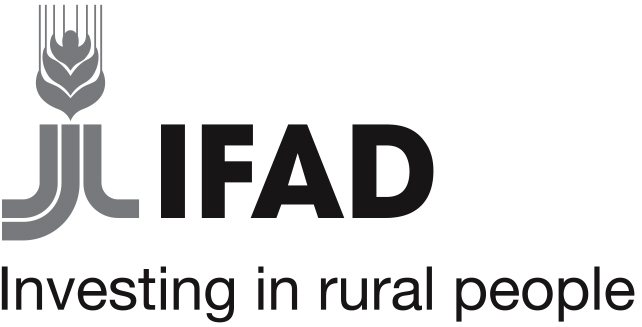An innovative and scalable cooking-based charcoal production value chain for women
The value of household charcoal produced exceeds that of the fuelwood used. Charcoal has become an important source of income in India and Africa; widows and single mothers can make a living with the income that household charcoal provides
BACKGROUND
Charcoal, transformed in pressed "briquettes" as a by-product of daily cooking, has the potential to become a sustainable value chain for poor rural women. By providing technical training and setting up women enterprises to produce commercial briquettes, the initiative empowers women to earn income by selling household charcoal after cooking.
WHAT’S INVOLVED
Knowledge sharing and knowledge management
Technical trainings have been provided to local women on how to collect charcoal after cooking. Further workshops on carbon economy and carbon credits were also conducted at community levels. The initiative also raised awareness of local women on the concept of biomass planting and gasifier stoves.
Building partnerships
The initiative was implemented by the International Network for Bamboo and Rattan (INBAR). INBAR has established multiple partnerships by collaborating with existing organizations in India and establishing new institutions in Tanzania.EXPLORE THIS SOLUTION
The Cooking-based Charcoal Production Value Chain For Women initiative can offer
- a sustainable and scalable value chain for rural women to gain incremental income through daily cooking activity; and
- environmentally sustainable alternatives such as bamboo/other biomass and energy-saving pyrolytic gasifier stoves.

Countries involved
Ethiopia, India, Tanzania
Project partners
IFAD, International Network for Bamboo and Rattan (INBAR), Jan Chetna Sansthan (JCS), Centre for Indian Bamboo Resource and Technology (CIBART), Isongole Bamboo Society, WODGRA (inclusive social enterprise on NCPP model)
Project dates
2012 – 2014
Share this solution
Bookmark this solution
BookmarkShow Full Solution
Summary
Charcoal produced as a by-product of daily cooking has the potential to become a new livelihood and a sustainable value chain for poor rural women. Women in Ethiopia, India, and Tanzania were trained to collect household charcoal and process it into "briquettes" – blocks of compressed coal dust used as fuel – that could be traded commercially. This charcoal production contributed to poverty reduction, strengthened gender empowerment, and promoted bamboo biomass farming.
Challenge/Problem
Women from poor rural households in Ethiopia, India and Tanzania often lack sustainable income sources and economic power. India, Tanzania and Ethiopia are ranked 131, 151 and 174 in the 2016 Human Development Index (HDI), indicating that people in these countries experience medium-to-high levels of poverty and deprivation in health, education and income. Women in these countries often suffer from lower HDI than men do, as all three countries face high gender inequality. For these women, acquiring stable income sources without additional work has been one of the most daunting challenges.
500 million households around the world use firewood for cooking purposes. Charcoal has the potential to become a stable and sustainable source of income, as it is a by-product of cooking, a natural daily activity. The amount of charcoal produced in a household is three times that of charcoal produced in factories, yet household charcoal has been commonly discarded. Turning charcoal into briquettes, compressed coal dust blocks, for commercial usage is a challenge to poor rural households due to deficiency of institutional systems and technical skills.
Solution
The initiative was implemented by the International Network for Bamboo and Rattan (INBAR), in collaboration with local partners, aiming to:
- raise awareness among rural households about the concept of using residual charcoal from cooking with firewood to generate incremental income without incremental work
- establish supporting institutional systems (such as collection clusters, cooperatives and enterprises) while strengthening and utilising the existing microfinance linkages and logistics mechanisms that enable on-the-spot payment for the charcoal
- develop simple quality standards for direct volume sale, processing into charcoal powder, briquettes (compressed charcoal blocks), activated charcoal, and other value-added applications
- initiate a step-by-step process to incentivize sustainable bamboo growth and use of pyrolytic gasifier cooking stoves with reduced firewood consumption, higher quality of charcoal, and reduced emissions.
The initiative of the household charcoal collection started in two provinces in India (Rajasthan and Gujarat), one in Ethiopia (Amhara) and one in Tanzania (Isongole). Target households were trained to extinguish cooking fires and collect the charcoal to prevent continued smouldering. Women stored this charcoal in baskets and sold it to local collection centres on a weekly basis. Charcoal processing units were set up as women’s cooperatives to process charcoal into briquettes and sell them in local markets.
Meanwhile, bamboo plantations and pyrolytic gasifier stoves were promoted in local households through training workshops with village administrative units and local women’s groups. Bamboo not only is a better alternative of fuelwood due to lower emissions, but it also provides green cover and additional income, as it can be used as fodder or raw material for furniture. In order to encourage bamboo plantation and use of gasifier stoves, materials for bamboo plantation and pyrolytic gasifier stoves were distributed to households in advance. They can be repaid later using charcoal produced with these new alternatives.
Results
- From May 2012 to September 2014, nearly 15,000 poor rural women directly benefitted from the grant: 7,619 from Rajasthan, India; 2,990 from Gujarat, India; 4,349 from Tanzania; 22 community kitchens in Ethiopia.
- This initiative increased the monthly income of Indian women by an average of 180 Indian rupees, without additional work.
- Over 31,250 fast-growing bamboos were planted, and a bamboo nursery was established in India; households now commonly use bamboo waste for cooking.
- The year-round income from the household charcoal model built resilience. Participants embraced the model, as they are now identified as self-employed entrepreneurs and are bringing additional income to their families. The value of household charcoal produced exceeds that of the fuelwood used. Charcoal has become an important source of income in India and Africa; widows and single mothers can make a living with the income that household charcoal provides.
A series of processing machinery and stoves have been developed. A low-cost pulveriser was developed in Ethiopia and replicated in India. Pulverisers, mixing machines and charcoal briquetting machines were tested in India and later obtained by Tanzania. Briquetting machines that use diverse agricultural wastes to produce sustainable “fuelwood” were tested and will be taken forward by another grant.
Lessons Learned/Potential for replication
- The household charcoal model is easily replicable and hugely scalable, as 500 million households around the globe produce 183 million tons of household charcoals at 10% yield annually, which is worth US$37 billion and sequestered 669 million tons of CO2.
- Charcoal pulverising and briquetting machines that work on single-phase power with lower volumes are better suited for rural areas. The pyrolytic biomass gasifier that produces both power and charcoal is an excellent entry point in areas where power is not available.
- Policy, advocacy and dialogue is needed to encourage greater collection of household charcoal and discourage charcoaling of timber.
- Seed capital is needed to set up processing facilities that could be repaid through household charcoal sales, especially in areas where the poor do not have the investment capital.
- According to some local beliefs, bamboo cannot be used as a source of charcoal production. Alternative biomass substitutes should be considered.
Next Steps
- Because 500 million households already produce charcoal, the potential for scaling up the initiative is unprecedented. Strategies could be developed to promote it further, benefitting both women producers and the environment.
- Household charcoal is the most objectively measurable and simple means of carbon capture and storage. It also has potential as biochar to enhance agricultural productivity.
- Policy support is needed to encourage larger-scale charcoal collection and processing. Household charcoal is a step towards environmental conservation, unlike the destructive and low-yield charcoaling of timber., Sustainable certification of household charcoal would support gender equality, expand the market and reduce environmental degradation.
Solution Video
Solution Document Downloads
Solution Additional Resources
An innovative and scalable cooking-based charcoal production value chain for women (INBAR website)Last update: 01/02/2019


